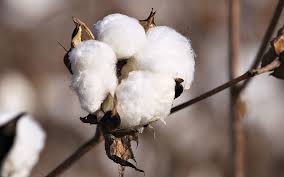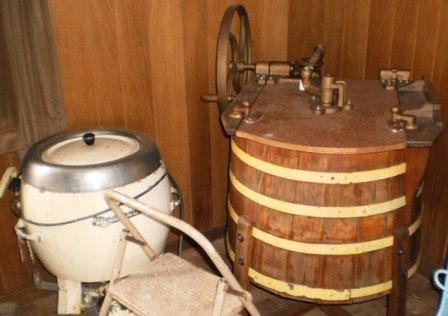 Cotton does not grow here, but in tropical and subtropical temperate regions such as Turkey, India and China, America (Peru..), Africa (Egypt..), But because it is the largest (vegetable) textile supplier, (and with global warming, who knows...) anyhow a brief explanation.
Cotton does not grow here, but in tropical and subtropical temperate regions such as Turkey, India and China, America (Peru..), Africa (Egypt..), But because it is the largest (vegetable) textile supplier, (and with global warming, who knows...) anyhow a brief explanation.
Cotton is a soft unicellular fiber that grows from the epidermis of the seeds of the cotton plant. The fibers are spun into threads which make soft, breathable textile.
The bolls are harvested, dried and combed. Then they can be spun.
Only about 10% of the raw weight is lost in processing. Some wax, protein, and seed remains, the rest is a natural polymer of pure, strong and durable cellulose.
 Each fiber consists of twenty to thirty layers of cellulose which have been twisted around each other as a miniature fire hose, which is rotated around its axis. Through these windings, the hollow fibers hook during spinning to each other.
Each fiber consists of twenty to thirty layers of cellulose which have been twisted around each other as a miniature fire hose, which is rotated around its axis. Through these windings, the hollow fibers hook during spinning to each other.
The average fiber length is from 10 to 50 mm. The exterior is covered with a wax layer, the cuticle. Because it is water repellent this layer must be removed before wet proceedings.
The cotton industry uses large scale and outrageous many chemicals as fertilizer and insecticide (1/5th worldwide), making cultivation but also processing very environmentally unfriendly.
The main part is now genetically modified.
During storage and transportation moth- and fungicides are used. Then the fabric is subjected to chemical treatments to strengthen the yar, to color, to facilitate maintenance and to make it 'nicer'. These chemicals come from the wastewater into the environment. One part remains, even after many washes, as residues in the clothes.
Thread Count shows how many threads are per inch, so per 2.54 cm².
Flannel is nice soft and warm in the cold winter months. It finds its origin in Wales. It is a 100% cotton textile for bedding, pajamas and shirts made from loose spun yarn that is woven into a linen or twill weave. Usually it is roughened on one or two sides for an extra woolly affect. Flannel consists of 82 thread counts. (Do not confuse with the costume fabric flannel (wool!) from crest yarns, which is only felt while the fabric is being roughened and rolled out of string yarns. (Felt: originally densifying and felting wool.)
Satin
As satin woven cotton is supple, shiny and silky soft. With this weaving technique, 4 weft threads are used over 1 warp thread. The fabric must consist of at least 220 thread counts.
